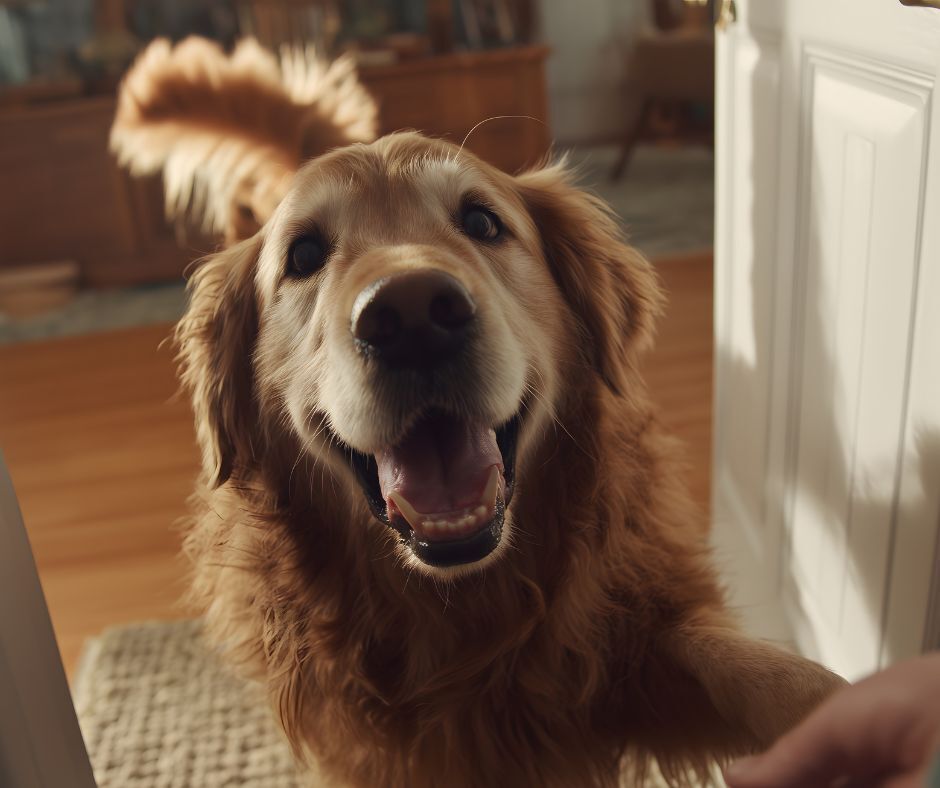Online Pharmacy


For dog lovers, few things are asheartwarming as a wagging tail. That joyful swish is often the first thing yousee when you walk through the door — one of those simple, unmistakable signsthat your dog is glad you’re home. But a dog’s tail is more than a “happinessmeter;” it’s a built-in communication tool that can offer clues about theiremotional state, comfort level, and sometimes even their physical health.
Here in Wisconsin and Minnesota, where dogsjoin us for everything from lakeside walks to snowy trail adventures, payingattention to their body language — especially their tail — can be an easy,everyday way to help them stay healthy and happy.
While no tail signal should replace regularveterinary care, keeping an eye on tail language can complement routinewellness visits, exercise, and enrichment activities. Think of the “Tail WagTest” not as a diagnosis, but as a habit that helps you spot changes early andcelebrate moments of genuine joy.
Not all tail wags mean the same thing. A loose, sweeping wag that moves the dog’s whole backside is often a sign of relaxation and friendliness. A rapid, stiff wag — especially if paired with a high tail carriage — may indicate alertness, tension, or even agitation.
Signs your dog may be thriving: The wag is relaxed, fluid, and paired with positive canine body language, such as soft eyes, loose muscles, ears in a neutral position, and an open mouth.
Studies suggest that dogs tend to wag more to the right when they’re happy and comfortable, and more to the left when they’re stressed or uncertain. Other dogs may even respond differently depending on the direction — right-sided wags can be reassuring, while left-sided wags may be interpreted as tense.
Signs your dog may be thriving: Right-sided wags during familiar, enjoyable moments — like greeting you after work, playing fetch at the park, or heading out for a morning walk.
A dog’s neutral tail position varies by breed and anatomy. Greyhounds typically carry their tails low, while Akitas have naturally curled tails. If your dog’s tail rests much lower or higher than what’s normal for them for an extended period, it could signal discomfort, fear, illness, or injury.
One example is limber tail syndrome (acute caudal myopathy), which can cause a sudden droop after vigorous activity or swimming — something to keep in mind for dogs enjoying summer days in the lakes across the Upper Midwest.
Signs your dog may be thriving: Their tail easily returns to its usual resting position when they’re calm and comfortable.
A wag on its own doesn’t always meanhappiness — context matters. Look for other indicators, such as appetite,playfulness, curiosity, and social engagement. A wag paired with bright eyes, abouncy gait, and eagerness to explore is a stronger indicator of well-beingthan tail movement alone.
Signs your dog may be thriving: Tailwags alongside playful behavior, interest in surroundings, and friendlyinteractions with people or other pets — whether that’s in your backyard, onthe sidewalk, or at the dog park.
If your dog’s tail-wagging habits suddenlychange — especially during activities they usually enjoy — it may point tostress, pain, or illness. Physical issues, like sprains or nerve injuries, canalso limit wagging.
What to do: Monitor for changes andcontact your veterinarian if the difference is sudden, persistent, or pairedwith other symptoms like lethargy, loss of appetite, limping, or signs of pain.
The Tail Wag Test is a helpful observation tool, but it’s not a diagnosis. Combined with routine veterinary visits, grooming, exercise, mental enrichment, and a watchful eye on overall canine body language, it can help you catch early signs of trouble — and notice those moments when your dog is truly thriving.
Whether you’re in La Crosse, Onalaska, or elsewhere in the 7 Rivers Region, understanding what your dog’s tail is telling you is one more way to deepen your connection — and give them the happiest, healthiest life possible.
Help your dog’s tail keep wagging for years to come. Schedule a wellness check at Onalaska Animal Hospital today and give your best friend the care they need to thrive.